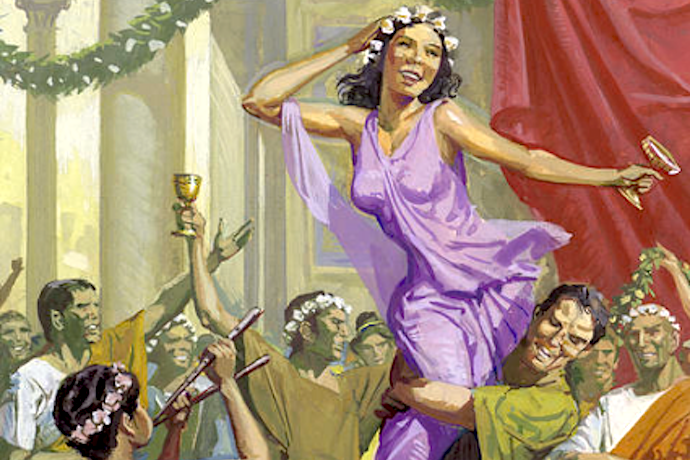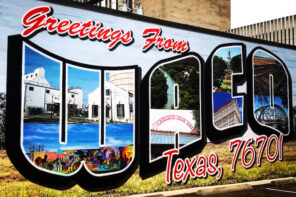Christmas is nearly upon us, and for those observing this means smaller if not cancelled family gatherings. In this long and draining year, why not find consolation in the spirit of the Saturnalia as a well-deserved break from 2020?
“December liberty,” as Roman poet Horace called it, the best of days! The Saturnalia used to be a beloved ancient Roman pagan festival, which was held right before the winter solstice, from 17 to 23 December in the old Julian calendar. It was a time of unlicensed celebration referring to a golden age without morality and rules. It praised life, and the mysteries surrounding the sun’s disappearance from our lives. It promoted role reversals, free speech, and libationary merriment of Dionysian proportions involving drinking, swearing and gambling, with banquets and food sacrificed to deities.
It even marked a truce period; no wars could be declared during the Saturnalia (but occasional murders occurred taking advantage of the distractions). On 19 December, gifts would be exchanged. Green garlands would decorate homes. People nominated a “King of the Saturnalia” (though please excuse me while I modernise tradition and nominate myself Queen in my living room to oversee the ceremonies alone).
In a year of prolonged lockdowns, it’s easy to lose track of temporality altogether. Wasn’t March just yesterday, and a hundred years ago at the same time? Seasons and ancient rites anchor us. They give significance to time, and how we relate to it. Myths provide the enchantment and touch of magic that have so often been missing this year. I always turn to them when I feel a deep void.
We’ve heard of—and for some directly experienced—seasonal affective disorder (SAD), which explains how the sun’s brief retreat impacts our mood and energy levels. The winter solstice, the shortest day of the year, also invites an exploration of obscurity. In archaic times, it was a critical passage of symbolic and cultural value. It embodied a threshold between death and rebirth. The low-rising sun casts long shadows. Winter light seems crispier, cruder and demands greater truth.
The sun, an allegory of cosmic fire, the essence of vitality, returns to our existence after the Saturnalia. Longer and warmer days bring seeds to germinate and buds to bloom and blossom. “If winter comes, can spring be far behind?” asked Percy Shelley. If we think of time and history in cyclical terms like the ancients did and many Eastern cultures still do, the Saturnalia and winter solstice celebrate the eternal return of life. After death, comes rebirth, and once reborn the world will grow, decline and die once more.
Porphyry of Tyre, a Phoenician philosopher from the 3rd century, summarized it best when he linked the Saturnalia to an emancipation towards immortality. If our soul and being routinely die, then they never really perish (think how we go to sleep and wake up every day). Taming what we lose, or gain, in this death and rebirth process is the object of ritualistic conjurations. We bury 2020, before accepting the regeneration offered by 2021 and the sun’s victory over night. Professor, historian and philosopher Mircea Eliade referred to this phenomenon as a repetition of Cosmos winning over Chaos in mythological cosmogonies.
Who is this Saturn then who lent his name to the Saturnalia? Saturn, or Chronos in Greek, was originally said to have ruled over fellow Titans, the primordial divinities, before his son Zeus and his Olympian gang overthrew him and others. He’s also Father Time, or the personification of time, and the two identities have been commonly merged. There are many stories about Chronos: as a child eater (time devouring all life and aspirations, and the reason why Zeus gets rid of him), as the producer of Chaos, and the force that turns the wheels of the zodiac—i.e. time which has a past, a present and a future.
Saturn became a god of seed and sowing, a revered patriarch and father of Jupiter in the Roman Pantheon. The Romans had a talent for what we would today call cultural appropriation, incorporating Greek or Near Eastern cults to create their own syncretic practice. He’s represented as an old man with a sickle, a figure embracing seasons and aging, the incarnation of a slow metamorphosis. The sickle is a promise of reward (plentiful harvests), which also carries hurt (a potential weapon, reaper). This darkness may explain why Saturn-Chronos is associated with the underworld. It’s a “chthonic” god belonging to an era before civilization constrained men with societal codes and rigidities. During the Saturnalia, they break free of restrictions, provided that order (Cosmos) be restored at the end of the festival.
There’s nothing more appropriate to reflect on in a pandemic year of grief which has forced us to reconsider fragility, finitude and time. During these shorter days and longer nights, as we may or may not put up a Christmas tree in our homes, we can think of ancient rites and mythology as a guiding light amid uncertainties.
We can indulge in an epicurean week of physically-distanced transcendence, of fun and liberation, observing the present becoming our past and warmer days of abundance inching closer.
While our connection to land and agricultural harvests is less vivid in the city where I live, reviving the memory of happier days—real or imaginary—and letting go of the quotidian weight aren’t. Sometimes that’s the only comfort which we can afford, and ultimately cherish. My Saturnalia crown awaits nearby.





